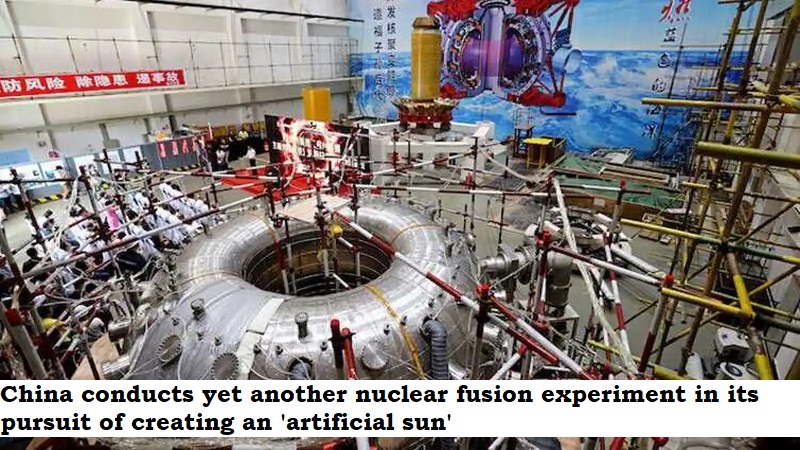
China has achieved a significant milestone in its quest to develop an “artificial sun” through nuclear fusion, with the Experimental Advanced Superconducting Tokamak (EAST) fusion energy reactor sustaining plasma for 403 seconds on Wednesday, breaking its previous 101-second record set in 2017. The achievement is viewed as a major breakthrough since scientists estimate that a minimum of 300 seconds is required to demonstrate steady-state operations. The previous success has already led to the development of the next-generation artificial sun called the Engineering Test Reactor (CFETR), which is set to be operational by 2035.
According to Song Yuntao, director of the Institute of Plasma Physics at the Chinese Academy of Sciences, the breakthrough in the EAST reactor’s “high-confinement mode” increases the plasma’s temperature and density significantly, which provides a solid foundation for improving the technical and economic feasibility of fusion reactors. The achievement is also a significant advancement in fundamental physics research, fusion engineering, and project operation and maintenance, he said.
China has been operating EAST since 2006 and has conducted over 120,000 experiments so far. In 2018, the reactor contained plasma for almost 18 minutes, breaking another record with temperatures reaching close to 70 million degrees Celsius. However, the operation mode was different from Wednesday’s test.
Nuclear fusion is the process of merging atomic nuclei to create massive amounts of energy, as opposed to the fission process used in atomic weapons and nuclear power plants, which split them into fragments. It is considered the holy grail of energy and is what powers the sun. By mimicking the natural reaction of the sun, scientists hope to harness vast amounts of energy to help address the energy crisis.
Unlike fission, fusion emits no greenhouse gases and carries less risk of accidents or the theft of atomic material. In 2020, scientists at the Korea Superconducting Tokamak Advanced Research (KSTAR) reactor also created an artificial sun that reached temperatures upward of 100 million degrees Celsius for 30 seconds.

Post Your Comments